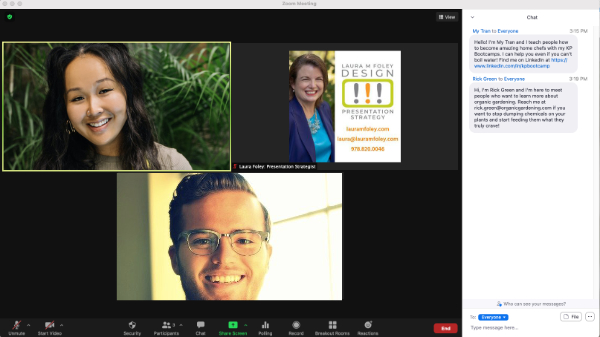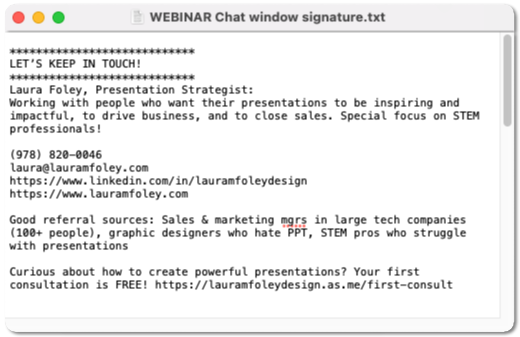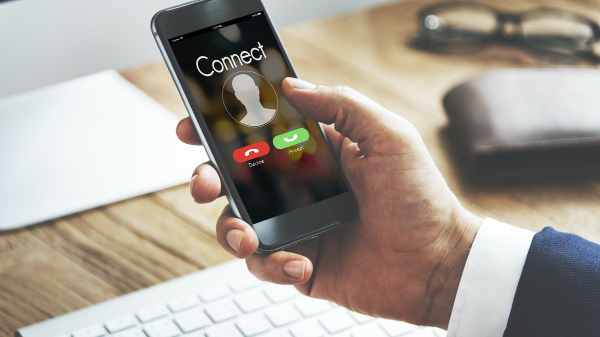If the pandemic has taught us one thing, it’s that people can actually network effectively online! If remote networking events are how you meet new clients, contacts, and potential employers, the way you participate can mean the difference between getting those all-important follow-up meetings and being forgotten. Here are 3 ways to succeed at remote networking that will give you an edge.
The value of remote networking
Remote networking events offer many advantages to in-person events. When you speak in the main meeting room, everyone can receive your message, not just one person. Often, there are breakout rooms to focus on specific topics. And the chat enables you to share contact information, links, and other details with ease!
As a sole proprietor, I do my own marketing for my business. A big part of my marketing effort is attending networking events. I’m always looking to meet people who can either use my services or who can refer me to others who can. Sometimes it ends up like that, but it doesn’t just happen.
I’ve developed 3 ways to succeed at remote networking that have worked for me which I’d like to share with you:

Tip 1: Nail your elevator pitch
Have you ever been to a remote networking event where people introduce themselves like this?
“Hi, I’m Ralph and this is my first time here.”
“I’m Gertrude Schmidt and I’m a neuroscientist at MIT. My lab is conducting some fascinating research on the science of memory and what we as individuals can do to increase our capacity for remembering data. I’ve recently published an article about my work in The Neuroscientist and have been lecturing extensively on the subject of memory, memory loss, and retention. Of particular interest is the link between…” [Moderator stops speaker in the interest of time.]
“Oh, I didn’t know I’d need to speak. I’m just seeing what this group is like.”
Argh, what a wasted opportunity to make good connections! Remember those elevator pitches you learned about for in-person networking events? They work for remote events, too. Always be prepared to briefly introduce yourself, keeping it to 15–30 seconds, depending on the situation. Your elevator pitch should tell people who you are, what problems you solve, and who you do it for. Bonus points for telling people why you’re there!
With that in mind, let’s rewrite the above examples.
“Hi, I’m Ralph Brigham, and I help job seekers to create résumés that rock!”
“Hello, I’m Gertrude Schmidt. I’m a neuroscientist who studies memory and how we can improve it. I’m here to find research assistants for my lab.”
“Hi, I’m Leidy Lopez. I just graduated college with a degree in hospitality management, and I’m looking for my first big opportunity! I’m here to meet people in the industry who might be able to help me get my foot in the door at one of New York City’s luxury hotels.”

Tip 2: Master the chat
After you dazzle everyone with your introduction, help them get in touch with you! Enter an abbreviated version of your elevator speech in the chat along with—and this is important—your contact information. I was at a networking event not long ago where people just put their names and titles or a long description of what they do into the chat. No URL, no contact info. How was anyone supposed to follow up?
Pro Tip: Put all of your contact info, etc., into a text file that you can copy and paste into the chat window. Here’s what my text file looks like:

Put a couple of variations into the same file so you have different options, depending on the situation. It’s quicker and easier to copy and paste then to type it all out each time you’re networking.
Don’t let all that good data go to waste! Toward the end of the networking event, be sure to copy and paste the entire chat into a text file so you have a record of it. If you’re using Zoom, you can click on the little box with the ellipsis (“…”) at the bottom of the chat window to save the chat.

Tip 3: Follow up
As with any relationship, you need to invest time and effort nurturing a networking connection. Chances are that you won’t have time to do that during the networking event itself. Connecting one-on-one with the people you meet will help you to get those all-important relationships off the ground.
When you meet someone you’d like to learn more about, reach out to that person either through a private chat during the event or using the contact information they’ve [hopefully] entered into the chat.
If you follow up on LinkedIn, be sure to send a personalized message reminding them of how you met and why you want to get in touch. If you don’t, they’ll see your name and the message “I’d like to join your LinkedIn network,” which can be an immediate turn-off.
I like to schedule 30-minute virtual coffee chats so we can get a sense of what each of us does, how we help, and what we’re looking for in our networking relationship. During these talks, I ask them if I can add them to my newsletter mailing list.
The most important part of your follow up is to be generous! If you see an interesting article or opportunity that would be great for that person, send it along. That way, when your new friend sees an opportunity that would be perfect for you, you’ll be the first person they recommend.
Putting it all together
When networking, it’s important to remember that it’s never a one-and-done experience. By giving people information about yourself and what you do, telling them how to get in touch with you, and taking the time to get to know them, you’ll be able to develop relationships that can help you in the long term.
